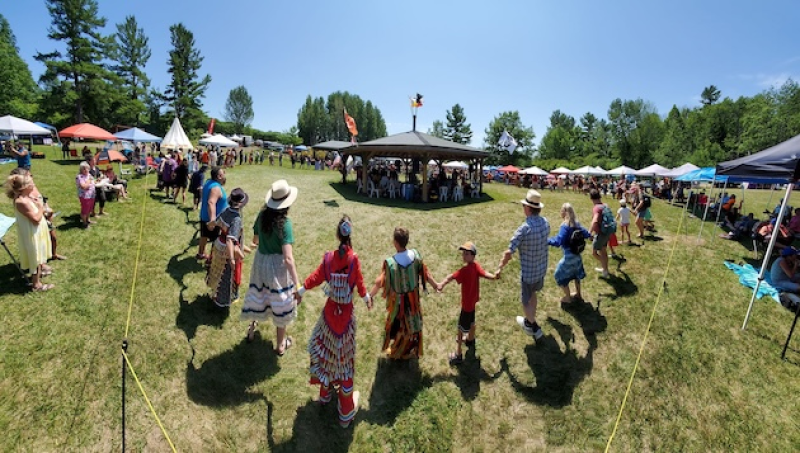- WFD 2025: Mass Fish Death in Indian Rivers |
- 3rd aftershock quake jolts Narsingdi, adjacent districts |
- G20 Backs Climate Declaration as US Boycotts Summit |
- Two Mild Quakes Jolt Dhaka; Epicentres Traced to Badda |
- Bangladesh earthquake death toll rises to 10; scores injured |
Indigenous Women in Canada: From Matriarchy to Marginalisation

Indigenous People’s Celebration in Canada.
If European colonialism had never occurred in Canada, matriarchy would likely still be strong in Indigenous culture. Matriarchy was the backbone of society’s structure and line of authority on Turtle Island (North America) before the arrival of Western settlers.
In practice, Indigenous women in Canada have been victims of violence and discrimination. In theory, they were supposed to enjoy full protection—along with children—as stated in Article 22 of the United Nations Declaration on the Rights of Indigenous Peoples (UNDRIP).
“Traditional knowledge would be whole and complete. Our languages, ceremonies, governance systems, planetary health, communities, cosmologies, land practices, water preservation, and harvesting practices would be alive and well,” says Anishinaabe Ancestral Knowledge Keeper Kim Wheatley, known by her Spirit name, “Head/Leader of the Fireflower.”
The role and influence of women in traditional Native American culture were powerful and pivotal. Wheatley explains that women’s main duty—like all community members—was “to live in harmony with creation, a life of committed purpose and passion based on the gifts they arrived with from the spirit world.” Women were hunters, foragers, healers, educators, leaders, artists, fishers, ceremonialists, singers, dancers, and governance holders. They made the long-term decisions for the communities they cared for.
The story of Indigenous women in Canada is starkly at odds with how Disney’s popular animation Pocahontas portrayed them. Chrystal Tabobandung, Founder of RAISE Indigenous cultural awareness and competence training, recalls: “We have suffered hatred from white women, as if we were less. We have been kicked out of our homes. We suffer today, sexualised by men and social media. Historically, white women envied us because of the roles we held in our communities and our traditional ways.”
This reflects the deep impact of colonialism. From early contact, it reshaped Indigenous women’s roles. In Europe, women were silenced and hidden; by contrast, Indigenous women held voices, seats at decision-making tables, and roles in safety, child rearing, politics, and community organisation.

